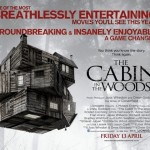The dreams and imaginings of childhood were identified, tagged, executed and resurrected all in the course of the March exhibition at Packer Schopf Gallery. The sprawling, gallery space was populated with the work of Camille Iemmolo and Dana De Ano; artists who communicate with their audiences via signifiers of child-like simplicity. Both artists elevated those signifiers to the status of archetype and, through hints of gravitas, push the viewer toward — perhaps subtle, perhaps cataclysmic — revelations of tragedy and rebirth.
Camille Iemmolo is an artist who can’t help but think big. The work shown in her exhibition, “Secret Society,” was born of narrative and connected by the kind of grand metaphors that make the images in a children’s story appear universal. She tends toward Sally Mann’s “magpie aesthetic,” a cyclonic energy that sweeps up the detritus of daily life – found objects including tufts of hair and fur, a wire birdcage, a semi-famous veterinarian’s hat – and expels it into a coherent, deeply personal body of work.
Despite the disparate elements comprising each piece nothing appears to be accidental. A fictive inventiveness guides each element into place and gives her work a surprisingly polished, professional feel, especially for an artist working outside traditional boundaries of education, medium and subject.
The emotional core of her show was the “Band-Aid House” a 10-foot tall multimedia installation the size of a New York studio. It was located at the far end of the gallery and exerted an inexorable gravity. It was wise to fight this pull less you skip the paper and mixed-media selections that set the context for the house. In Iemmolo’s own words, “The show is about the pitfalls of denial. The life you imagine as a child, what your life has become, and what you do with that space in between.”
Not unlike the bricks in Pink Floyd’s “The Wall” each piece of paper art took on a harmful effect of familial and personal socialization. You could find drink and madness, sexual promiscuity or dysfunction, greed and more. These manifested in images like a ghostly sketch of dynamite in a stack where the black-lettering “Caution” and the faint suggestion of a lit fuse portended great disaster. In another image a child-like rendering of a unicorn with feathered wings stood atop a black mountain, looking forlornly down, perhaps rethinking the decisions that led to this precarious perch.
More found-objects at play appeared in a series of sculptures. A wire dressmaking dummy enclosed an open book and birdhouse where essential organs should dwell, and a semi-circle of chopped and stacked wood invoked the artists’ own personal drama. Less than a year ago Iemmolo suffered a terrible riding accident that broke her neck, ribs and seven vertebrae. It was a miracle she was not paralyzed. “Secret Society” sprung from the complicated mental and physical efforts to mend her shattered world.
This context was essential when taking in the show’s centerpiece, the aforementioned “Band-Aid House.” This installation, covered in over 16,000 Band-Aids, which the artist painstakingly applied herself, was a cornucopia of multimedia delights. On each side were murals into which you could place your own face (would you choose the Society of Higher-Ups or the Society of Lower-Downs?). Each mural had an audio component to further set the mood, and finally an interior mirror greeted visitors and made the art experience uniquely personal.
Iemmolo’s work pleases the eye but there is also a bit of trickery. She does her best to lure her audience in with aesthetics and a dash of humor, but each piece is grounded with an “oh…” moment that artist hopes will cause deep self-reflection, and consequently the revelation of a personal, potentially dark truth.
If Iemmolo’s work shouts Dana De Ano’s work whispers. “Field Dressing” is the latest from this SAIC grad (MFA, Painting and Drawing). The core of her work is paper art hung simply from the wall without a colored backdrop or frame. In this respect her canvas expands beyond the boundary of the page onto the wall itself, perhaps into the world beyond. This mastery of negative space lends special gravity to the simple shapes and images that inhabit the De Ano’s worlds. She is a master of suggestion and archetype, letting the viewer examine something essentially abstract but chillingly familiar.
De Ano builds her imagery from a combination of ink line-drawing, cut paper and found objects shaped into everyday subjects like clouds or the burning orb of sun. Textures rise from the blank whiteness, literally hanging off the page in a mélange of 2-dimensional and 3-dimensional construction.
The artist and her husband are currently rehabbing a century-old farmhouse in the Wisconsin countryside. Her frequent trips to and from this destination informed this body of work. It was easy to see rolling hills, vast cloudscapes and the suggestions of farm and field. Trips antiquing and visiting flea markets also returned a bounty of found objects used to create the sculptures mixed among the paper art. These sculptures represented early, furtive forays into 3-dimensional work for an artist who has been working in “2 and a half D” for many years.
At first blush it may seem that Iemmolo and DeAno were peculiar bedfellows for a shared exhibition. Some viewers may have been drawn to the wild theatricality of Iemmolo’s work. Others may have been captivated by the cavernous simplicity of De Ano’s art, spending hours gazing into the landscapes, shaping their own topological visions. Deep examination reveals that both artists are working toward a similar truth, and are simply taking wildly divergent paths.
























